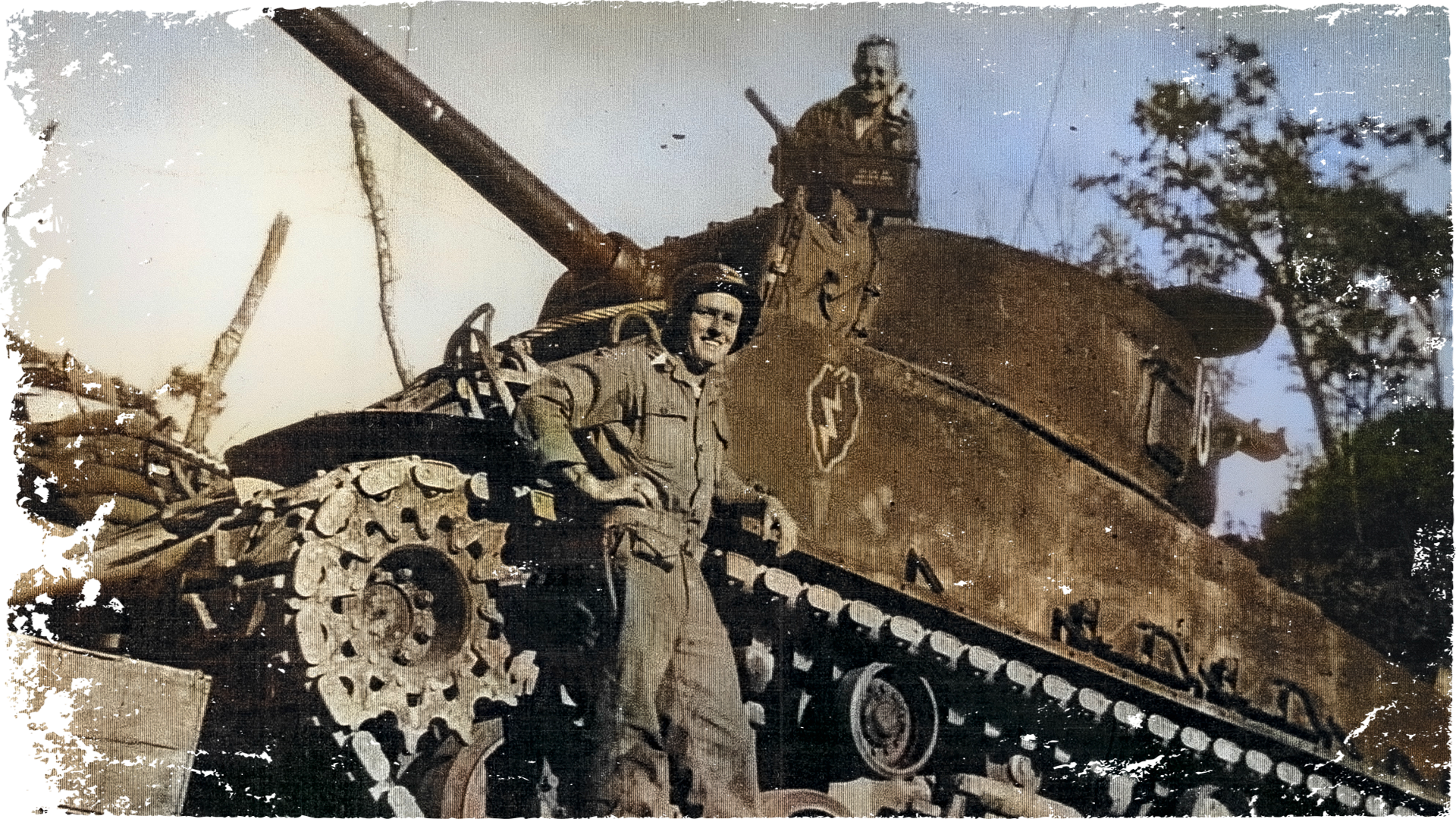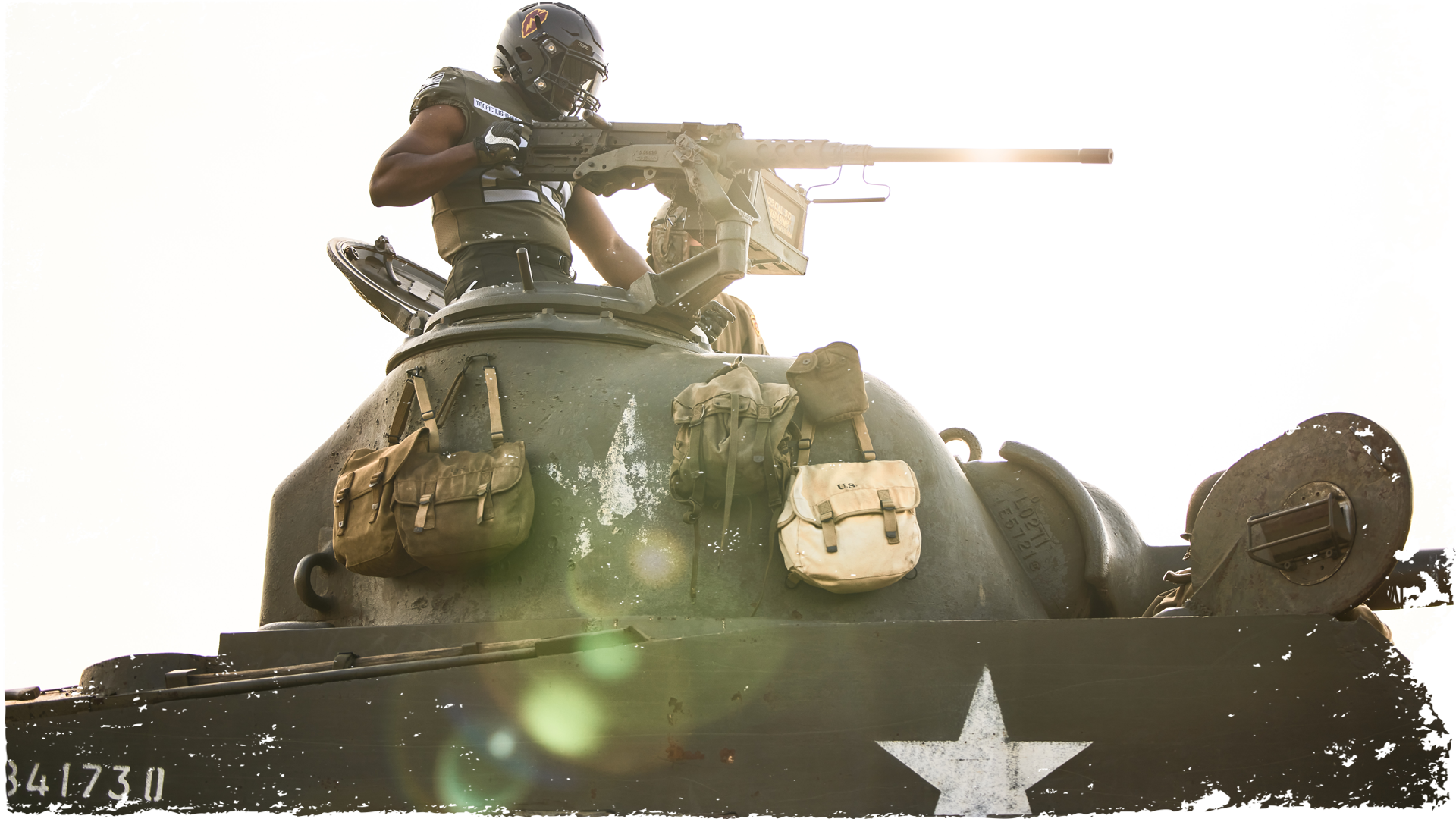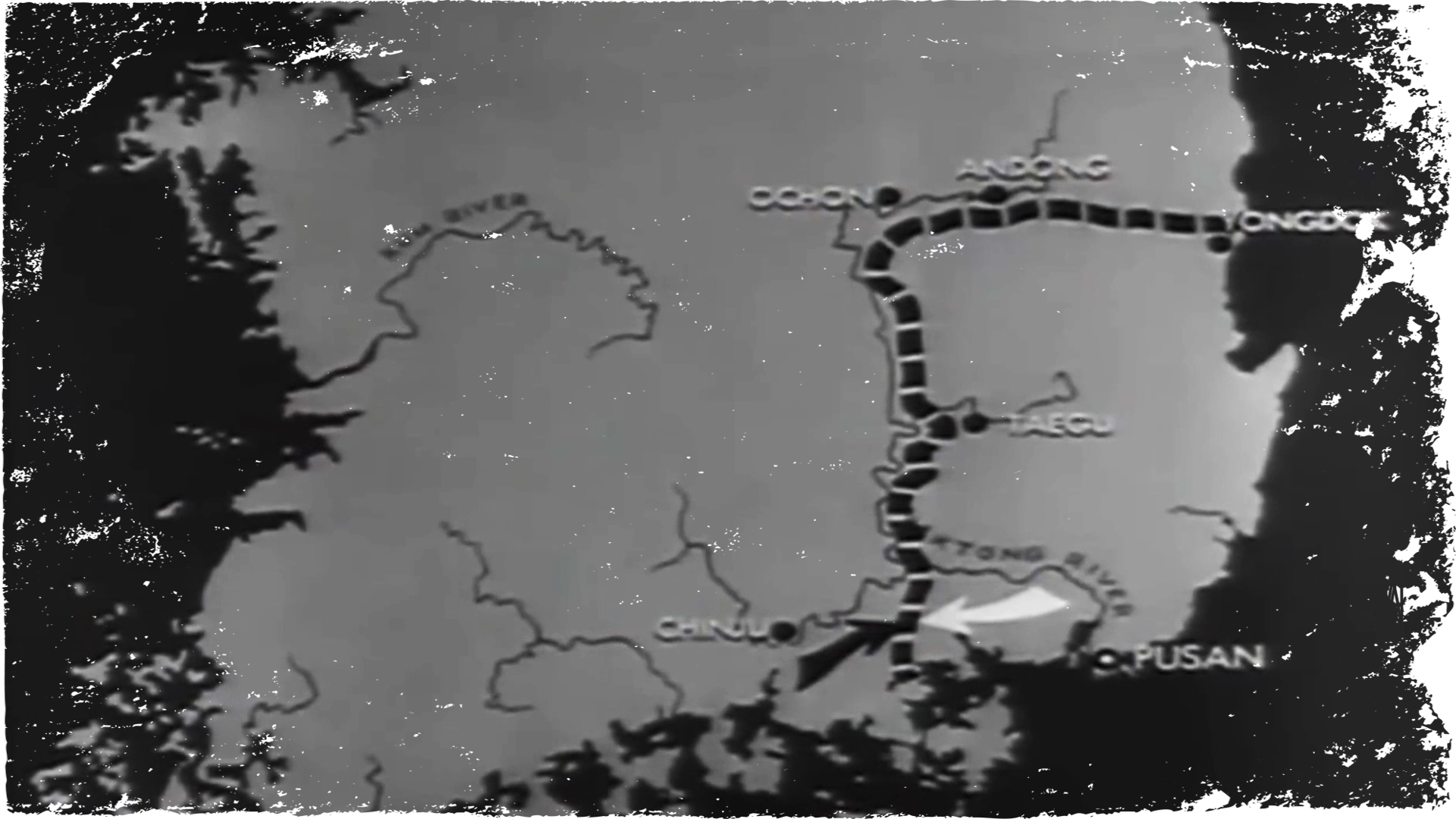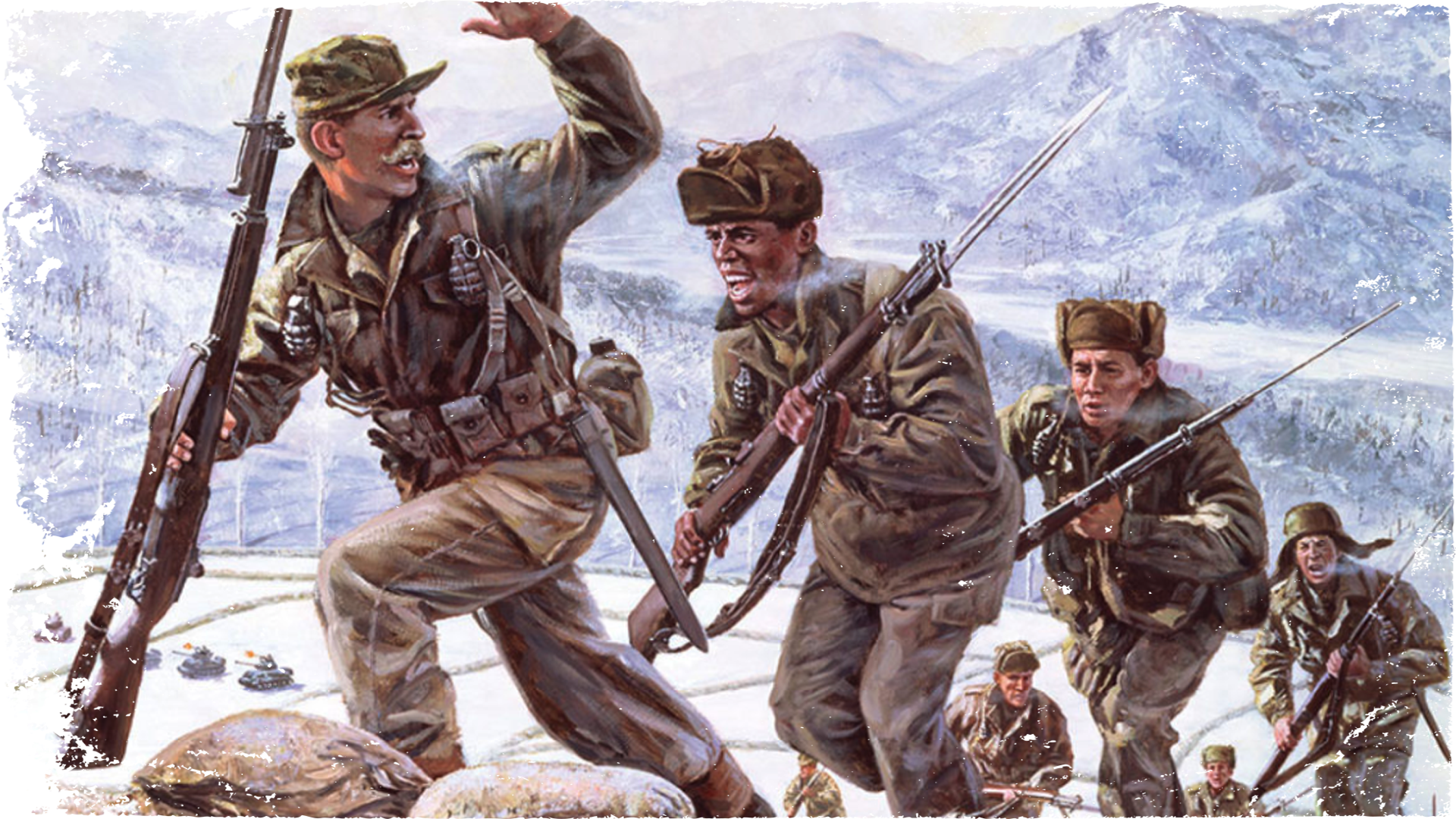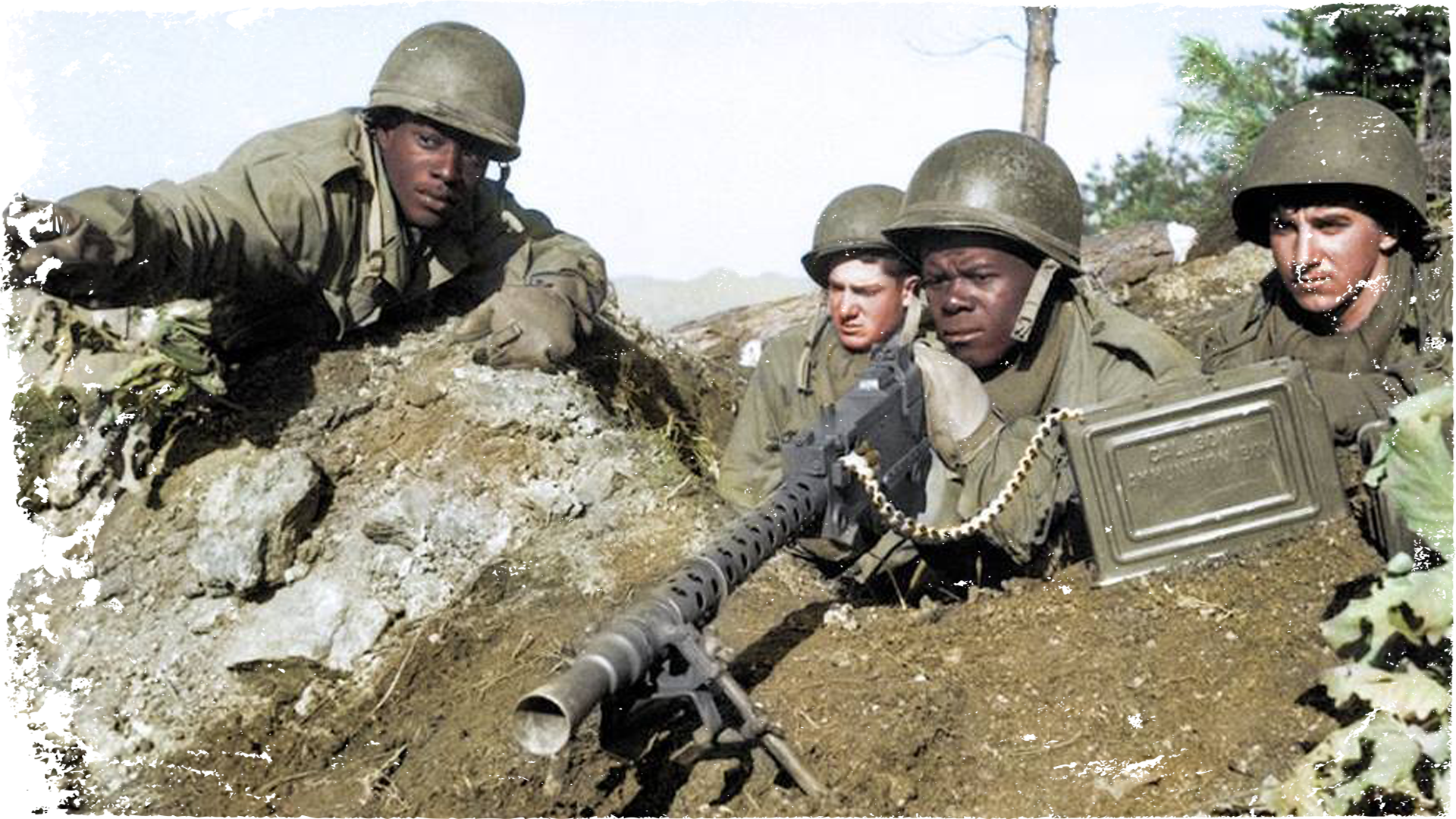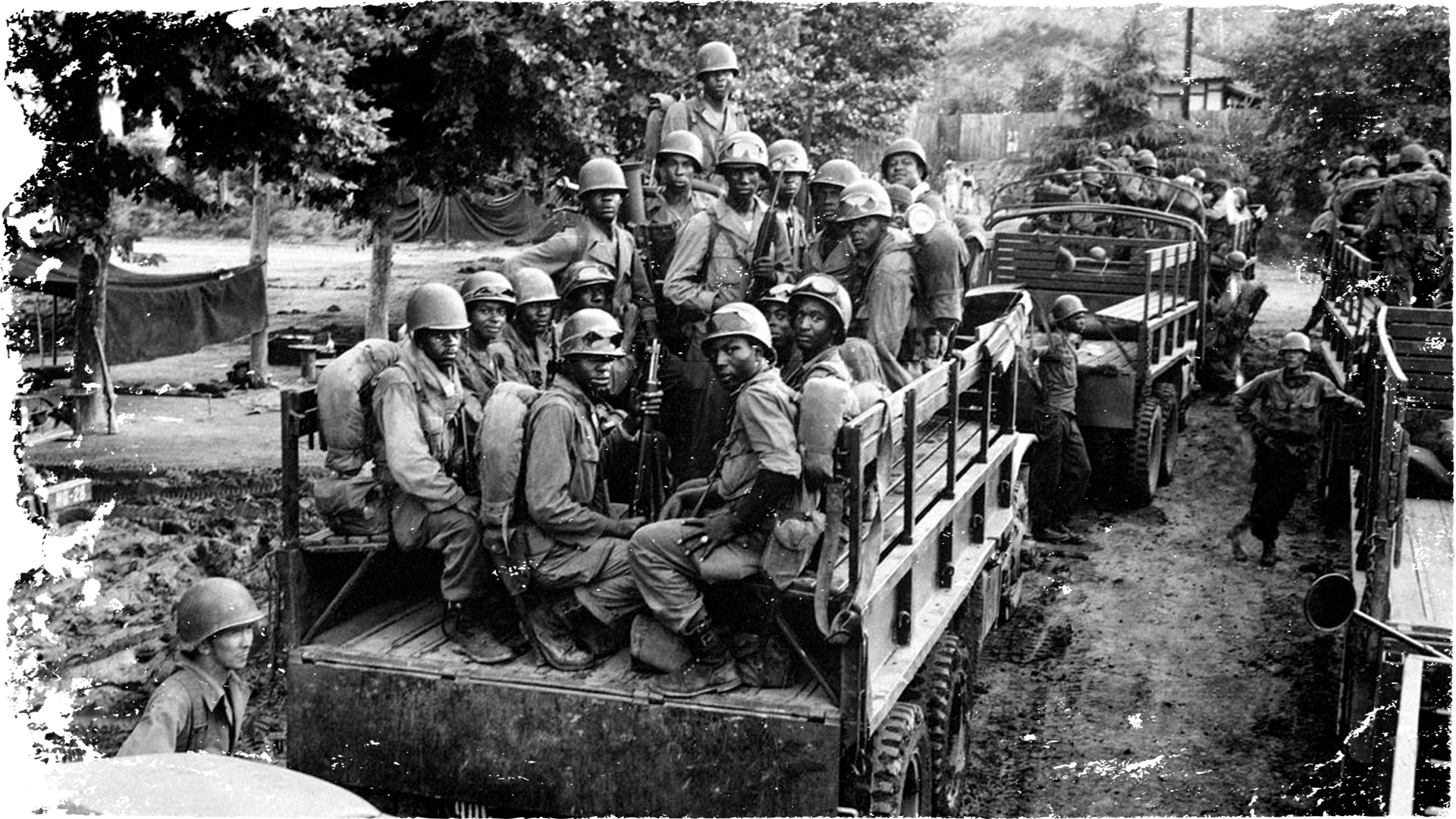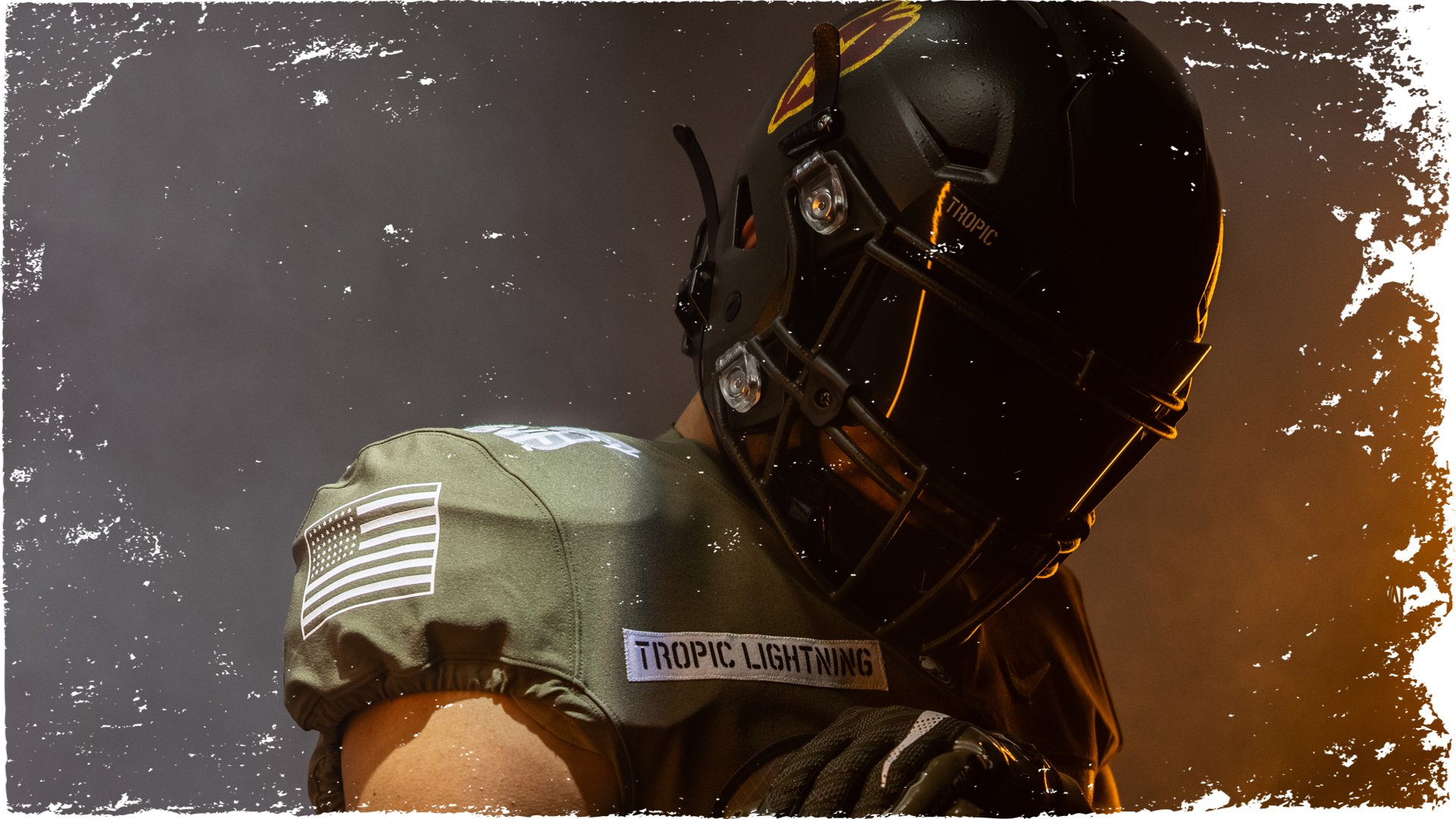
ARMY AND NIKE TEAM UP FOR 2020 ARMY-NAVY UNIFORM TO HONOR THE SOLDIERS OF THE 25th Infantry DIVISION
THE 25TH INFANTRY DIVISION
THE 2020 ARMY-NAVY UNIFORM TELLS THE BRAVE STORY OF THE SOLDIERS OF THE 25TH INFANTRY DIVISION DURING THE KOREAN WAR. THE TROPIC LIGHTNING DIVISION SERVED WITH THE SPEED AND FAST STRIKE PRECISION AS THEIR MOTTO SYMBOLIZES.
AMONG THE DIVISION, THE WOLFHOUNDS STRUCK FEAR INTO THE ENEMY WITH THEIR FEROCIOUS FIGHTING NATURE IN COMBAT. THE WOLFHOUNDS LIVE UP TO THEIR MOTTO WITH A NO FEAR ON EARTH MINDSET.
WE HONOR THE PAST BY RE-TELLING THE STORY OF “TROPIC LIGHTNING”, A STORY OF VALOR, COURAGE, AND SACRIFICE. INSPIRED, HUMBLED, AND MOTIVATED BY THE SOLDIERS THAT CAME BEFORE US, WE DON THEIR PATCHES, ADOPT THEIR MOTTOS, AND HOLD THEIR DEEdS CLOSE TO OUR HEARTS.





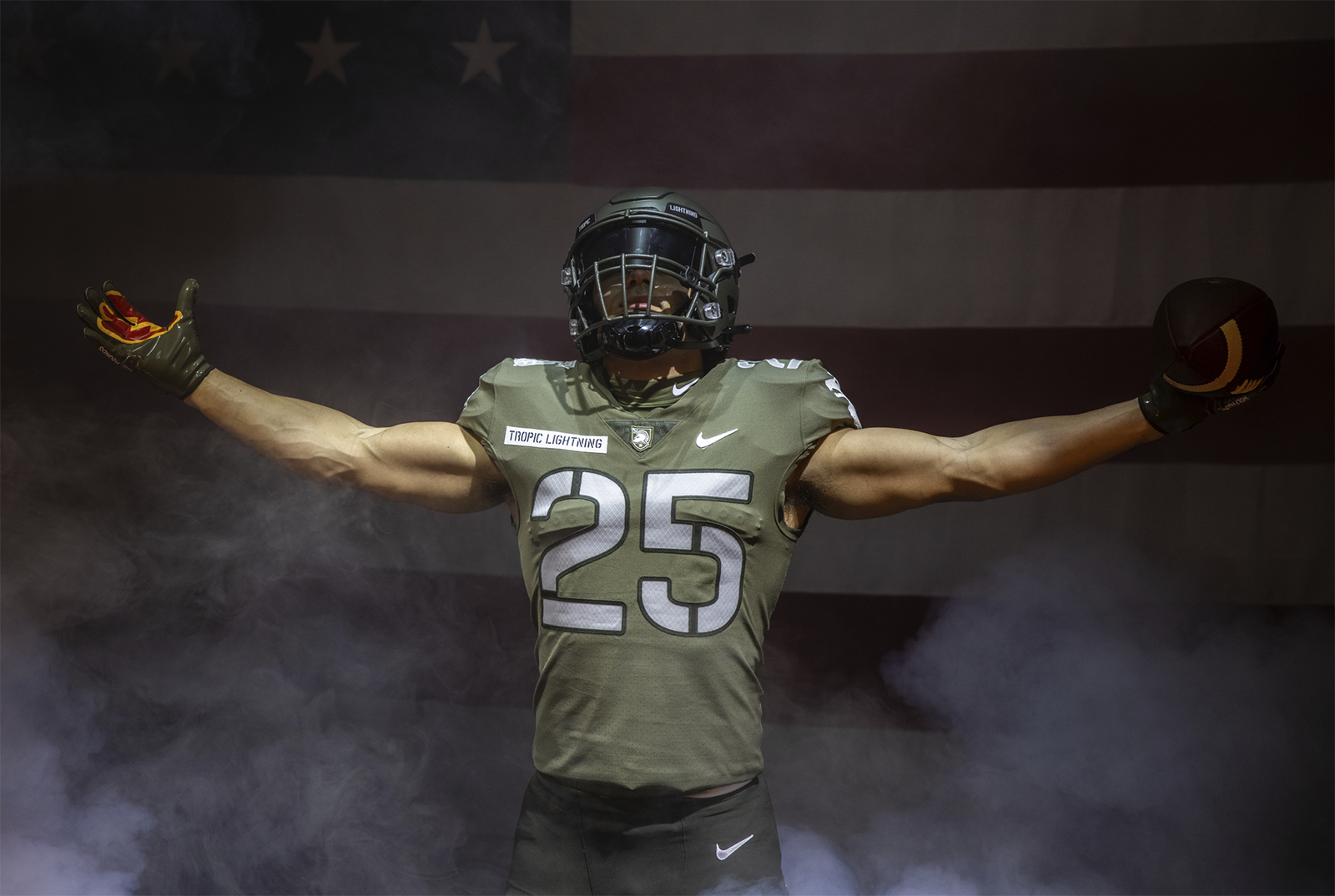
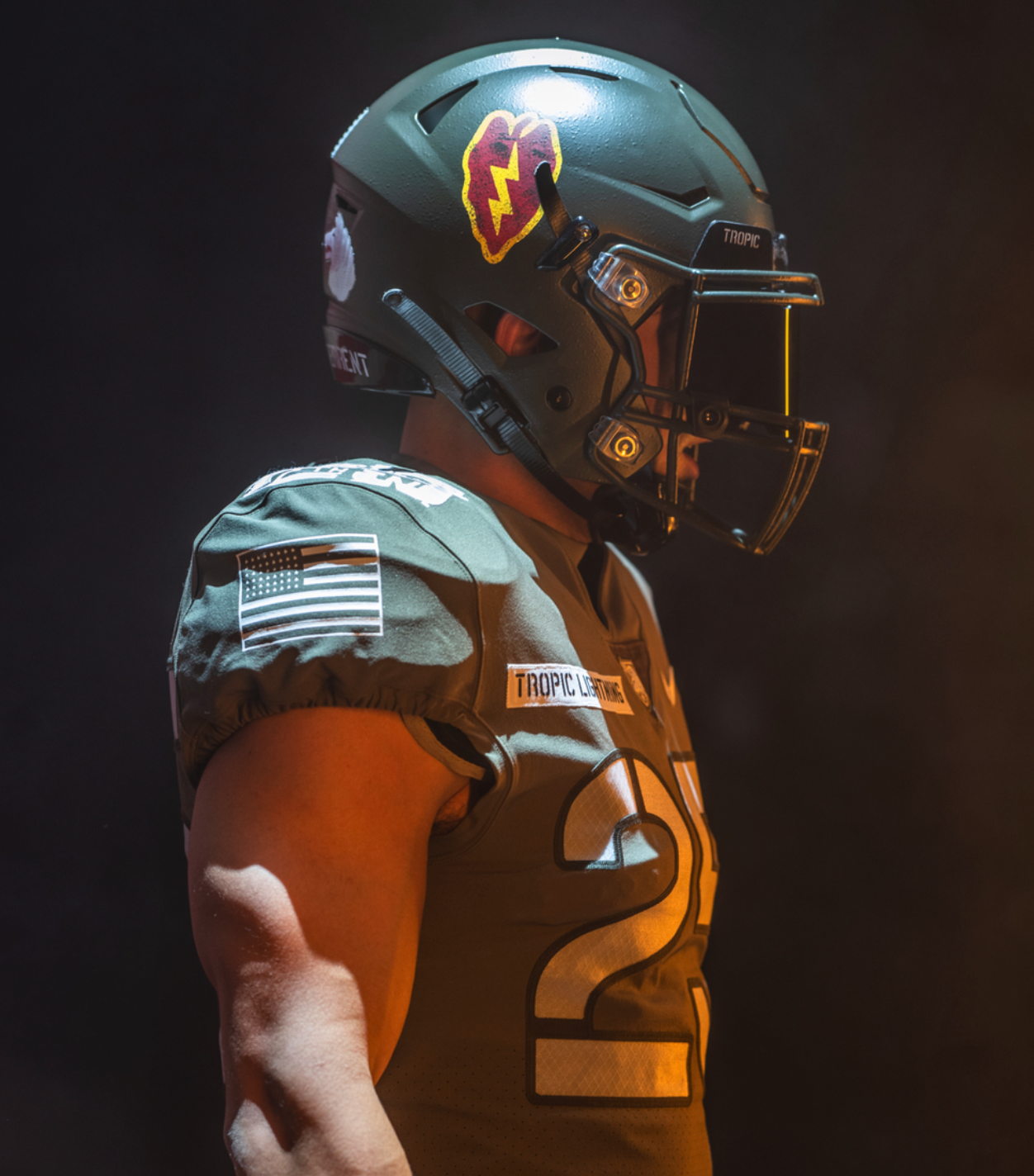
Tropic Lightning
America’s Pacific Division
The United States Army formed the Hawaiian Division in 1921 to protect the islands and growing interests in the Pacific. On October 1, 1941, the Hawaiian Division was split, creating the 24th and 25th Infantry Divisions. The 25th Infantry Division was stationed at Schofield Barracks on the island of Oahu. Just over two months old when the Japanese bombed Pearl Harbor, the 25th Infantry Division would move to Guadalcanal and take part in some of the most bitter fighting in the Pacific Theater.
In 1953, “Tropic Lightning” became the official moniker adopted by the 25th Infantry Division, representing the speed at which they accomplish their missions. In September 1954, after 12 years abroad, the 25th Infantry Division returned home to Hawaii.
“ELECTRIC STRAWBERRY”
The 25th Infantry Division’s iconic shoulder insignia is a lightning bolt superimposed on a taro leaf. The colors of gold and red were those of the late Hawaiian monarchy. While soldiers over the years have jokingly referred to the patch as the “Electric Strawberry”.

“Stand or Die”
We are fighting a battle against time. There will be no more retreating, withdrawal or readjustment of the lines or any other term you choose. There is no line behind us to which we can retreat… there will be no Dunkirk, there will be no Bataan. A retreat to Pusan would be one of the greatest butcheries in history. We must fight until the end… We will fight as a team. If some of us must die, we will die fighting together… I want everybody to understand we are going to hold this line. We are going to win.
— General Walton Walker (USMA CLASS OF 1912)
27th INFANTRY Regiment Wolfhounds
The 27th Infantry Regiment was the first American regiment to completely defeat a full-scale NKPA attack. They were one of the designated fire brigades from the 25th Infantry Division, After repelling an initial assault, Colonel Michaelis knew that additional attacks were imminent. Just after dark, he quietly pulled back his front line troops alongside the reserve battalion. As NKPA troops moved around both flanks, they passed in front of the two Wolfhound Battalions. The 27th’s heavy fire was devastating. General Walker would use the Wolfhounds in the coming weeks as his fire brigade, sent to trouble spots around the perimeter.
The “Battle of the Bowling Alley” best exemplifies those instances of flexibility as the 27th Infantry Wolfhounds, reinforced the 1st ROK Division defending the northwestern corner of the Pusan Perimeter near the city of Taegu. Within a 10-day period from 15-25 August 1950, the Wolfhounds, along with elements of the 23d Infantry, 73d Tank Battalion, and the 8th Field Artillery, defended Taegu and managed to prevent 2 NKPA divisions from penetrating the critical sector of the Pusan Perimeter.
IT WAS DURING THIS CRUCIAL DEFENSIVE ACTION THAT A TIME MAGAZINE PHOTOGRAPHER MADE FAMOUS THE GRAFFITI OF CORPORAL KENNETH TAYLOR WHO PAINTED THE WORDS “27TH INF, COURTESY OF FOX CO.” ON THE BROAD SIDE OF A DESTROYED NKPA T-34 TANK. JUST SO THERE WOULD BE NO CONFUSION, HE ALSO IMPROVISED A “WOLFHOUNDS” ALONG THE BARREL.
Origins of the Wolfhounds
The Wolfhounds earned their nickname in Siberia in World War I aggressively pursuing Bolshevik forces while guarding the Trans-Siberian Railroad. Kolchak I and all his successors embody the regiment’s nickname and personify the tenacious ferocious fighting nature of the regiment. The Regiment has a reputation of utter ferocity in combat and gentle compassion in peace.
Frightened by no Difficulties | NO FEAR ON EARTH
Nec Aspera Terrent is the motto of the Wolfhounds.
The Latin phrase has been translated in various ways including No Fear On Earth, Frightened By No Difficulties, and Difficulties Be Damned. Whatever way it’s said, the notion of accomplishing the mission despite fear and obstacles lies at the heart of what it means to be a 27th Infantry “Wolfhound.”
The Wolfhounds have more Medal of Honor recipients than any other regiment going back to the Spanish-American War.
Battle of Pusan Perimeter
When you must defend a 100-by-50 mile rectangle of mountainous terrain against 14 enemy divisions with your back against an ocean, you get disciplined and you get creative. The story of the Year 1950 meets the Year 2020.
In July 1950, the United States and the United Nations responded to the North Korean People’s Army (NKPA) attack across the 38th Parallel with whatever forces were available, to include the undermanned US 24th and 25th Infantry Divisions, the 1st Cavalry Division, as well as 5 divisions of the Republic of Korea (ROK) Army. Even after desperate fighting and the arrival of reinforcements in the form of the 5th Regimental Combat Team, the 1st Marine Provisional Brigade, the 2nd Infantry Division, and the British 27th Infantry Brigade, Lieutenant General Walton Walker realized in early August that his only alternative lay in defending a small perimeter to buy some time. The Commander of the US Eighth Army needed the southeastern Port of Pusan, Korea to build reinforcements and eventually regain the offensive.
The successful defense of the Pusan Perimeter that followed has gone down in history as one of the most skillful executions of a battle of “interior lines” ever fought. Teamwork and discipline on a grand scale paved the way for multiple units to fight interchangeably in a tight circle. Individual regiments became “fire brigades,” giving leadership the flexibility to reinforce threatened weak points when needed and accept risk when it wasn’t. Walker made use of every domain available to aid the critical defense on the ground—the US 5th Air Force dominated the skies while the Navy’s 7th Fleet provided close-air and naval artillery support. By mid-September, Eighth Army’s success allowed reinforcements in the form of troops and materiel to pour into Korea and set the conditions for the amphibious invasion of Inchon and the eventual linkup of UN Forces.

“We had acquired some Chinese documents stating that Americans were afraid of hand-to-hand fighting and cold steel….when I read that, I thought, “I’ll show you!”
— Lewis Millet
Fix Bayonets - Battle of bAYONET hiLL
On February 7, 1951, Lewis Millett led his soldiers from Easy Company, 2D Battalion, 27th Infantry Regiment, 25th Infantry Division atop Hill 180 near Soam-Ni, Korea. With only bayonets and hand grenades, the company fought a hand-to-hand assault against heavy opposing fire. Millett and his soldiers used their bayonets with such lethality that the enemy fled in disbelief.
Even after he was wounded by grenade fragments, CPT Millett refused to be evacuated until the mission was secure. President Harry Truman later presented CPT Millett with the Congressional Medal of Honor in July 1951. Millett, a WWII, Korean and Vietnam Veteran rose to the rank of Colonel.
Racial Integration of Combat Units
The Korean war was one of the first American wars in which military units were not segregated by race. President Harry S. Truman issued Executive Order 9981 in July 1948 ordering the full desegregation of the United States Armed Forces, a process that would take nearly six years to complete. By the summer of 1950, with American soldiers deploying to fight in Korea, the Army had made little progress at integration. Only the press of battle and the threat of defeat that summer at the Pusan Perimeter forced changes to Army policy that broke down segregation barriers and made the Army more capable in combat.
The largest segregated unit committed to battle in the summer of 1950 was the 24th Infantry Regiment, one of the original “Buffalo soldier” units organized by an act of Congress in 1866. By 1947 the 24th Infantry was assigned to the 25th Infantry Division with occupation duty in Japan. The regiment arrived in South Korea in time for the general withdrawal to the Pusan Perimeter, where it gained an unfair reputation for combat failure. This regiment suffered from many of the same difficulties that affected all other combat units struggling to contain the North Korean attack, but instead of attributing its poor combat record to racial prejudices that negatively affected the quality of its leadership and material support, many choose to presume that black soldiers would not fight.
However, the demand for troops at the front was becoming critical enough in the months of August and September that Eighth United States Army Korea personnel officers began assigning replacements—whatever their skin color—to all units that needed them. Thus, desegregation was being accomplished de facto by the demands of battle.
Notwithstanding the challenges the soldiers of the 24th Infantry faced, they went on to fight with the 25th Infantry Division until October 1951, when the Far East Command deactivated the 24th Infantry Regiment. Racial prejudice made the job of the soldiers of 24th Infantry far more difficult, but despite all they faced, two members of the regiment were awarded the Medal of Honor for their demonstrated valor in battle.
Korean War Era Flag
The flag is accurate for the Korean War era featuring 48 stars for the number of states during the time (Alaska and Hawaii were officially added as states in 1959).
INSPIRED FONT
Featured Units Within 25th Infantry Division
This year’s Army-Navy uniform features 10 units as subsets of the 25th Infantry Division. Each player on December 12 will feature one of the unit’s insignia on their helmet noted below.




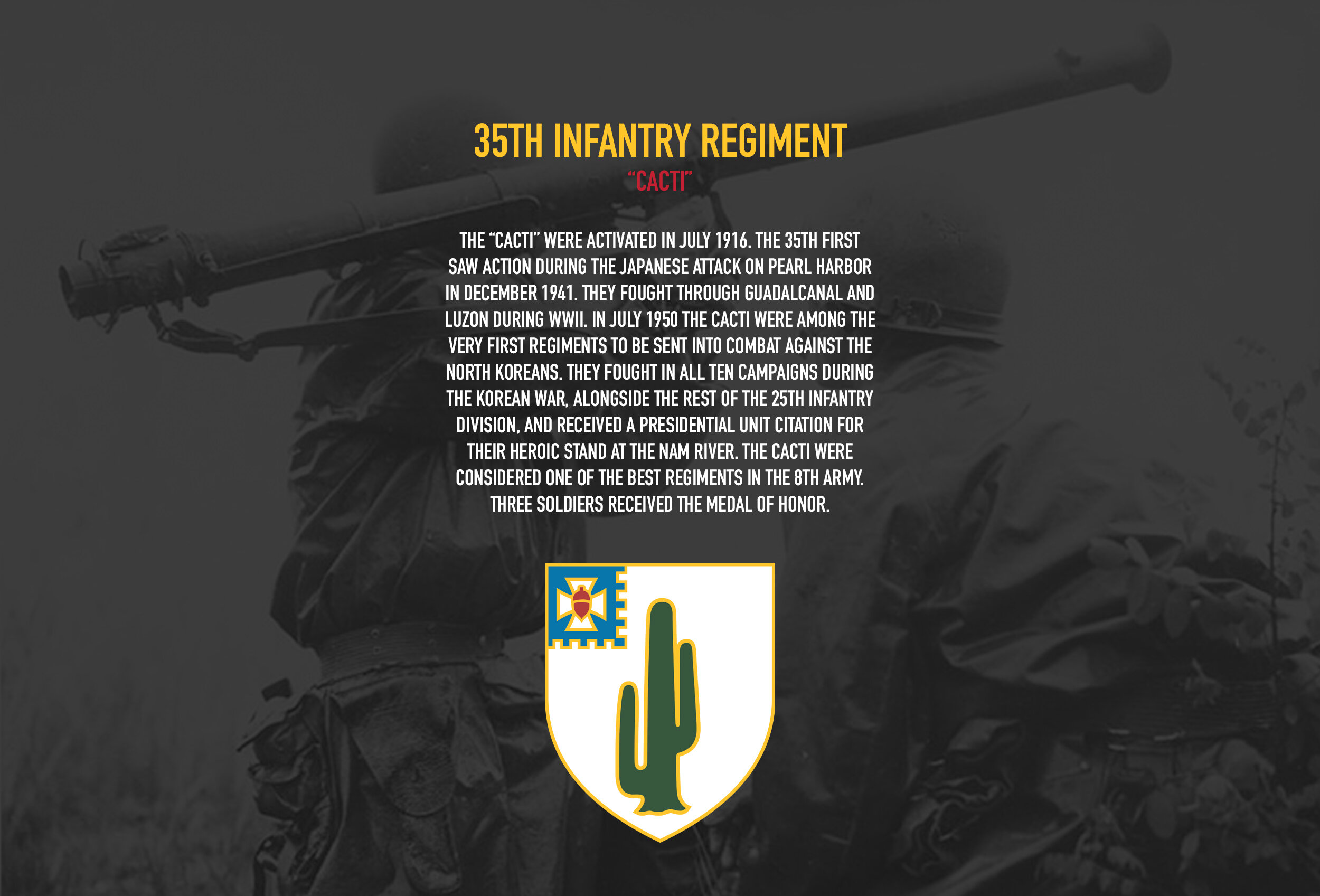





YOUR STORY
Do you have a relative or someone close to you who served with the 25th Infantry Division? Post on Twitter, or Instagram using #TROPICLIGHTNING and your post could be featured Here! (Posts must be publicly viewable and not set to private sharing setting) Photos are encouraged. Beat Navy!



